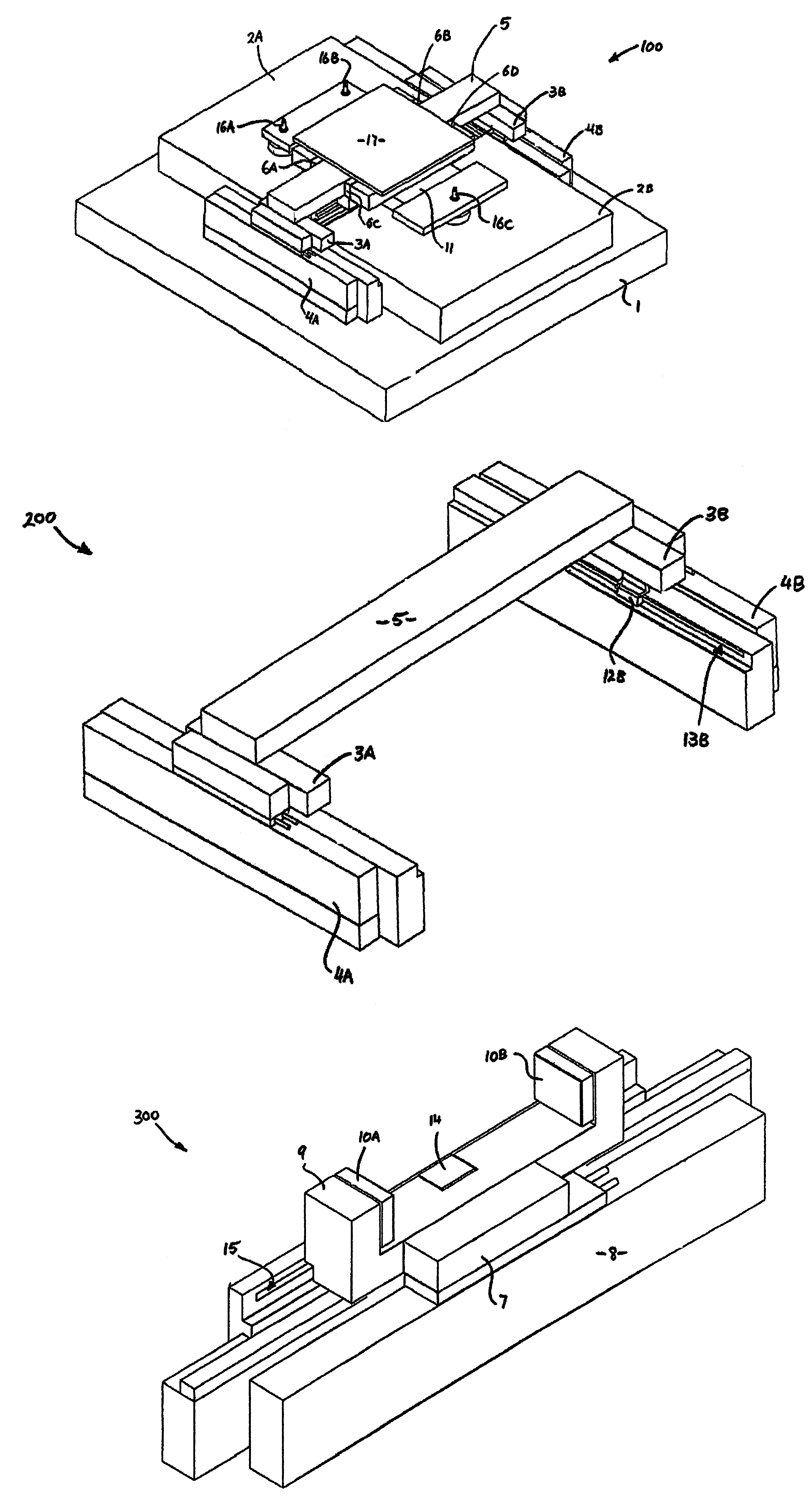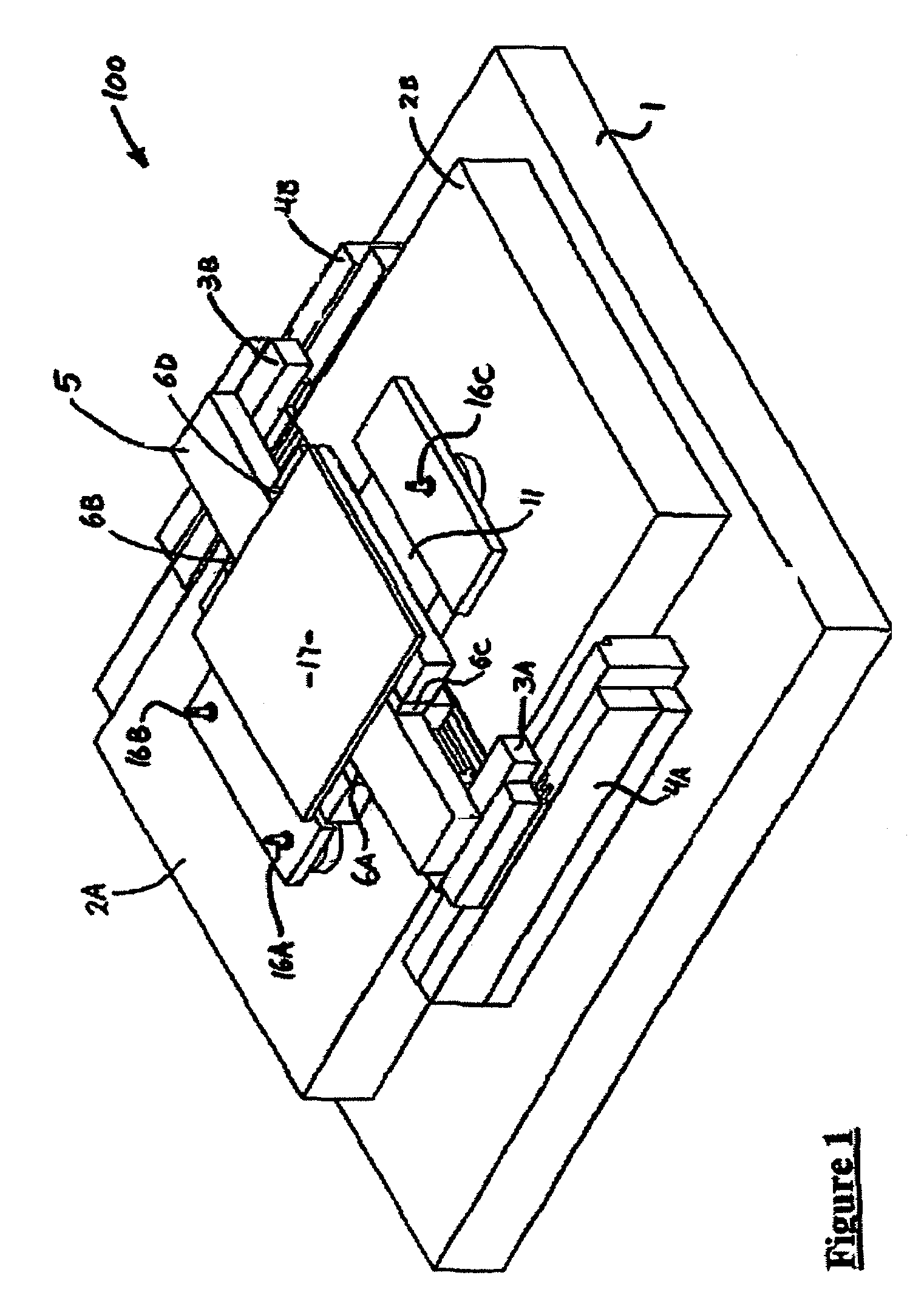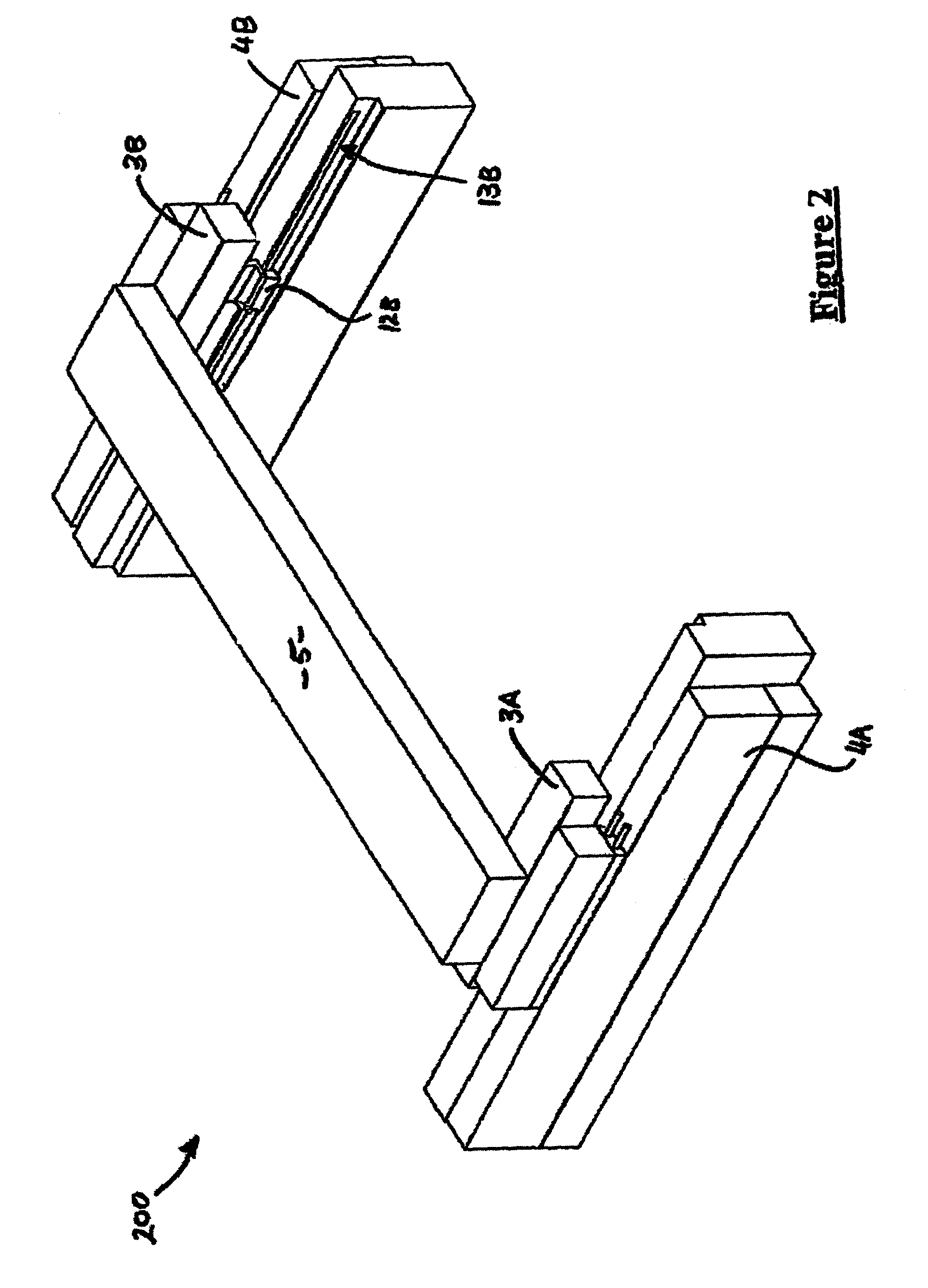Decoupled planar positioning system
a planar positioning and decoupling technology, applied in the direction of electric/magnetic measurement arrangements, element comparison, manual actuation control mechanisms, etc., can solve the problems of increasing the cost of the system, affecting the positioning accuracy, and poor efficiency of the actuator power used for moving the payload, etc., to achieve excellent footprint efficiency, high speed, and high precision
- Summary
- Abstract
- Description
- Claims
- Application Information
AI Technical Summary
Benefits of technology
Problems solved by technology
Method used
Image
Examples
Embodiment Construction
[0024]A decoupled planar positioning apparatus 100 is illustrated in the drawings, constructed according to a preferred embodiment of the present invention. The overall structure of the positioning apparatus 100 which is illustrated in FIG. 1 can be considered as a combination of several sub-assemblies, namely an X-axis assembly 200 shown in isolation in FIG. 2, a Y-axis assembly 300 shown in FIG. 3, and a planar platform assembly 400, shown in FIG. 4. The positioning apparatus 100 is also shown in FIG. 5 equipped with displacement measuring interferometer systems.
[0025]The structure of the positioning apparatus as shown in FIG. 1 includes a table top 1 and reference plates 2A and 2B. The reference plates 2A, 2B are similarly sized rectangular plates supported on an upper surface of the table top 1, and positioned adjacent one another with a gap between their adjacent edges. The two reference plates 2A and 2B are kinematically supported on the table top 1 at three location per plate...
PUM
 Login to View More
Login to View More Abstract
Description
Claims
Application Information
 Login to View More
Login to View More - R&D
- Intellectual Property
- Life Sciences
- Materials
- Tech Scout
- Unparalleled Data Quality
- Higher Quality Content
- 60% Fewer Hallucinations
Browse by: Latest US Patents, China's latest patents, Technical Efficacy Thesaurus, Application Domain, Technology Topic, Popular Technical Reports.
© 2025 PatSnap. All rights reserved.Legal|Privacy policy|Modern Slavery Act Transparency Statement|Sitemap|About US| Contact US: help@patsnap.com



